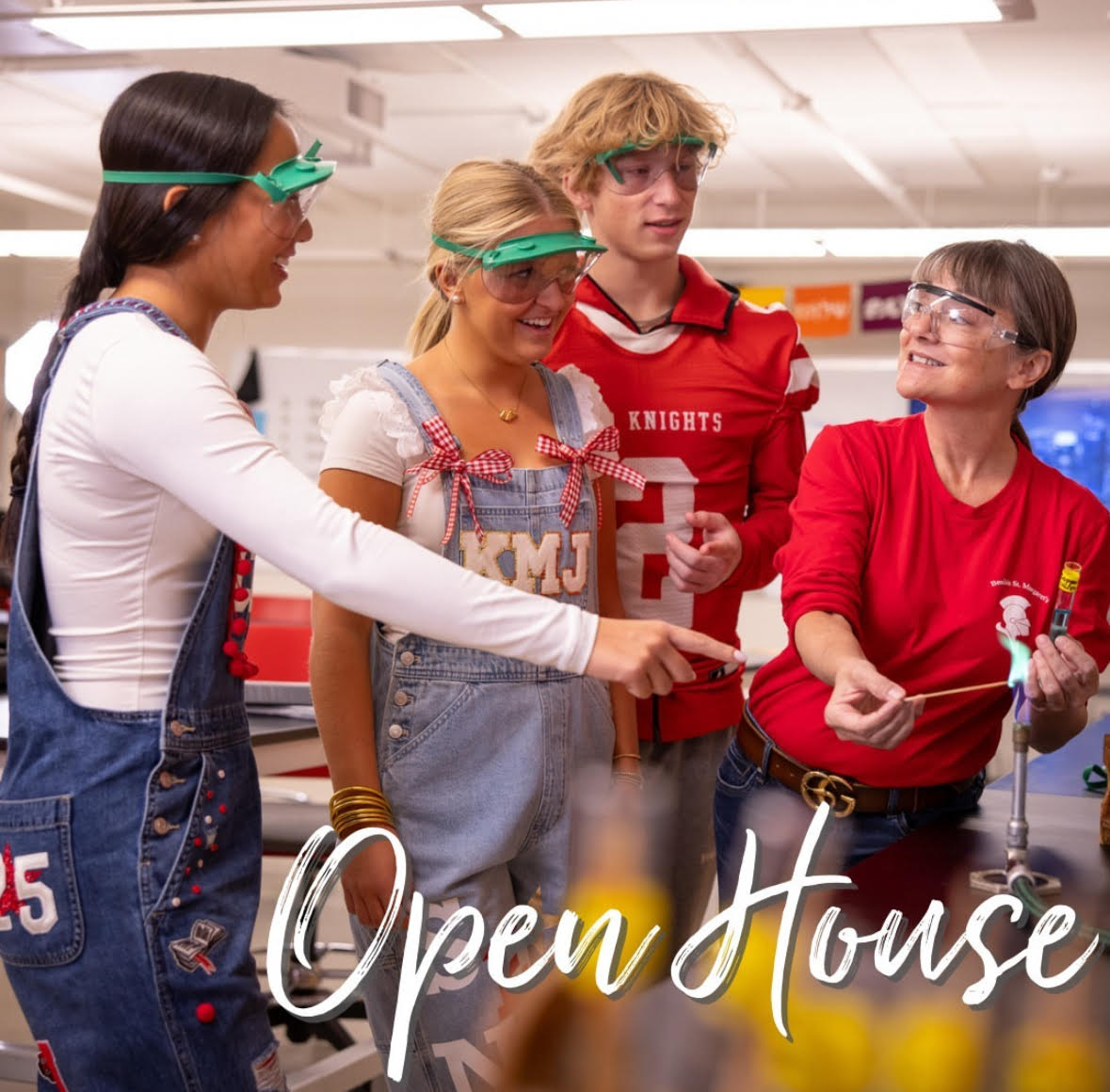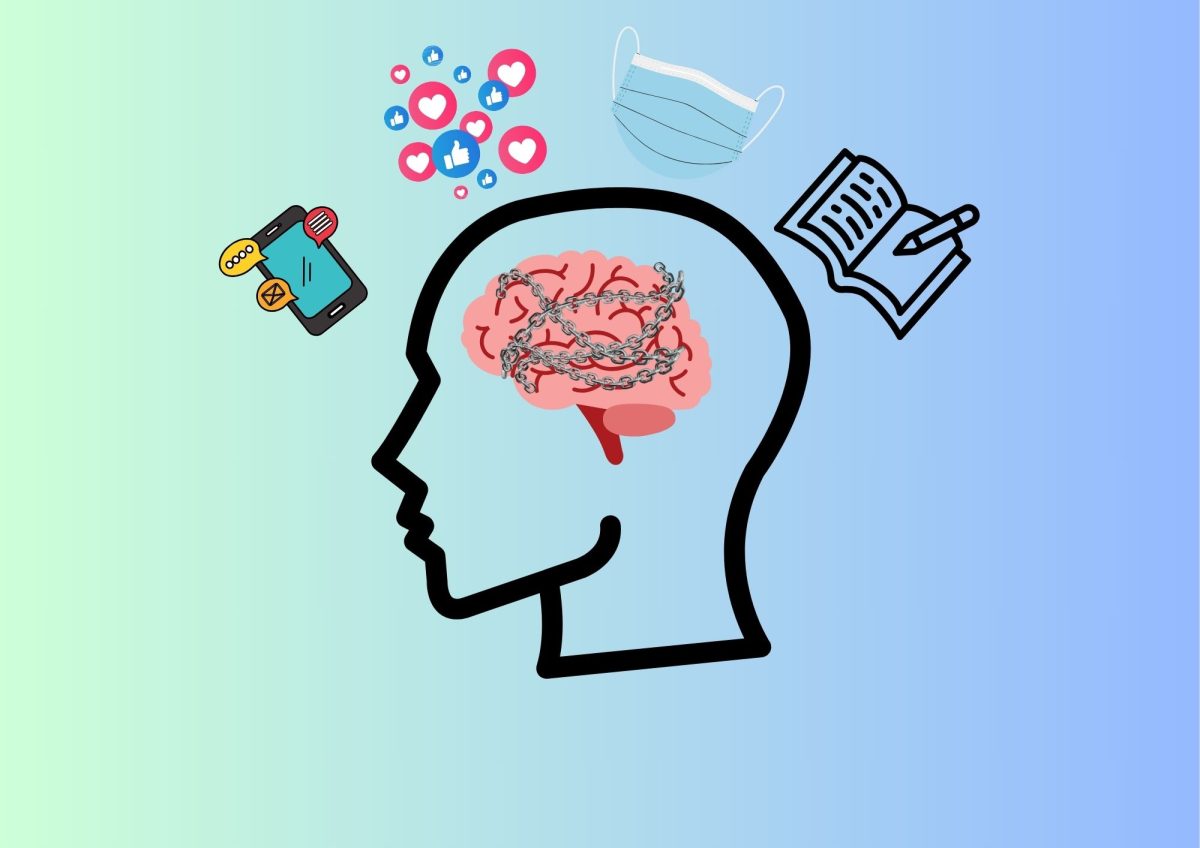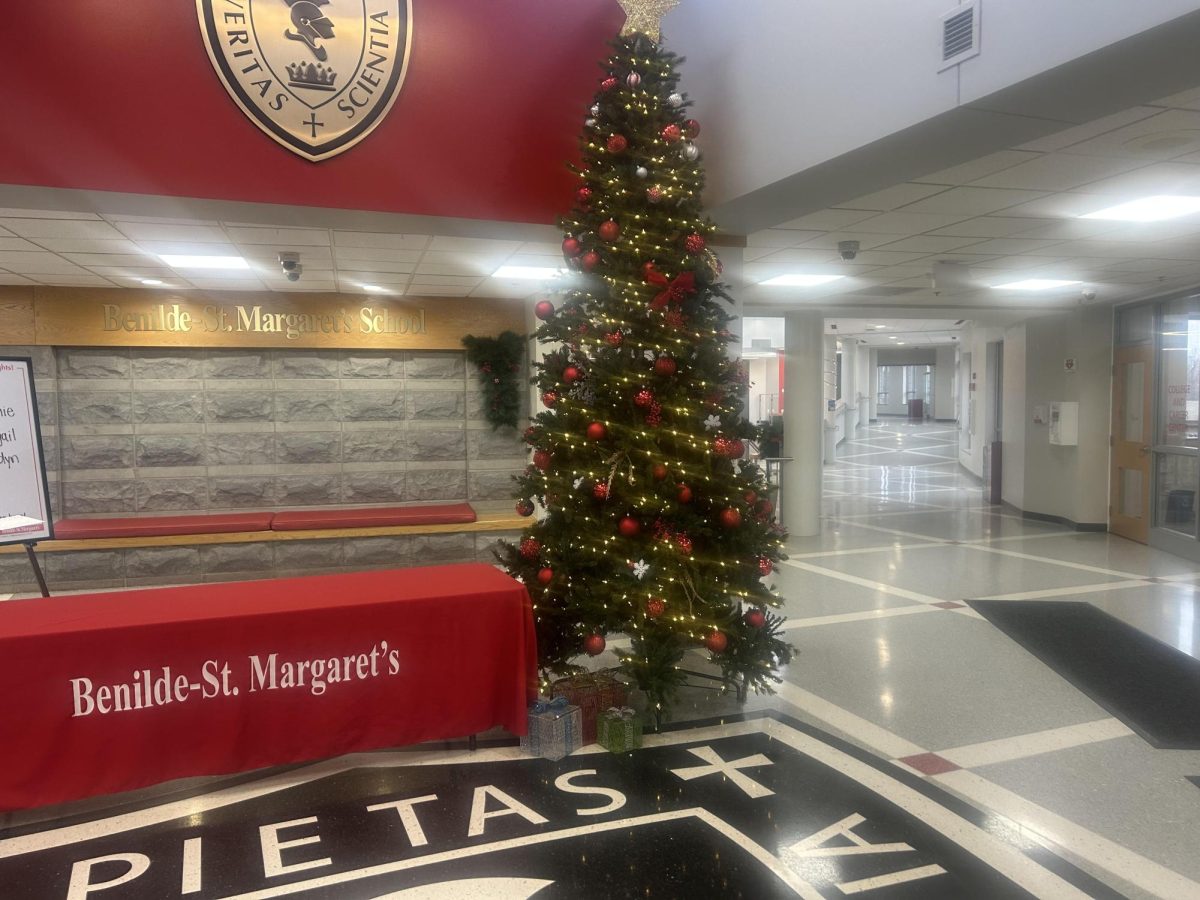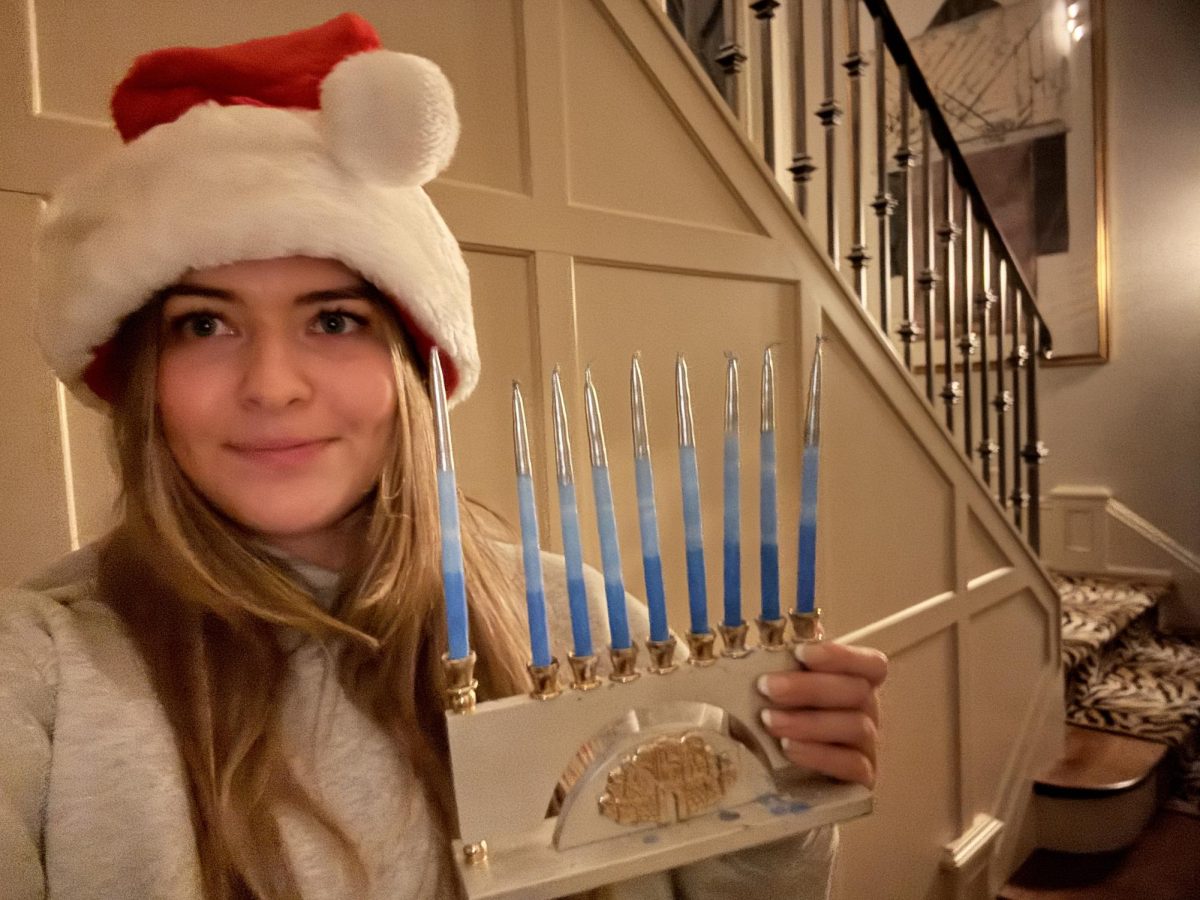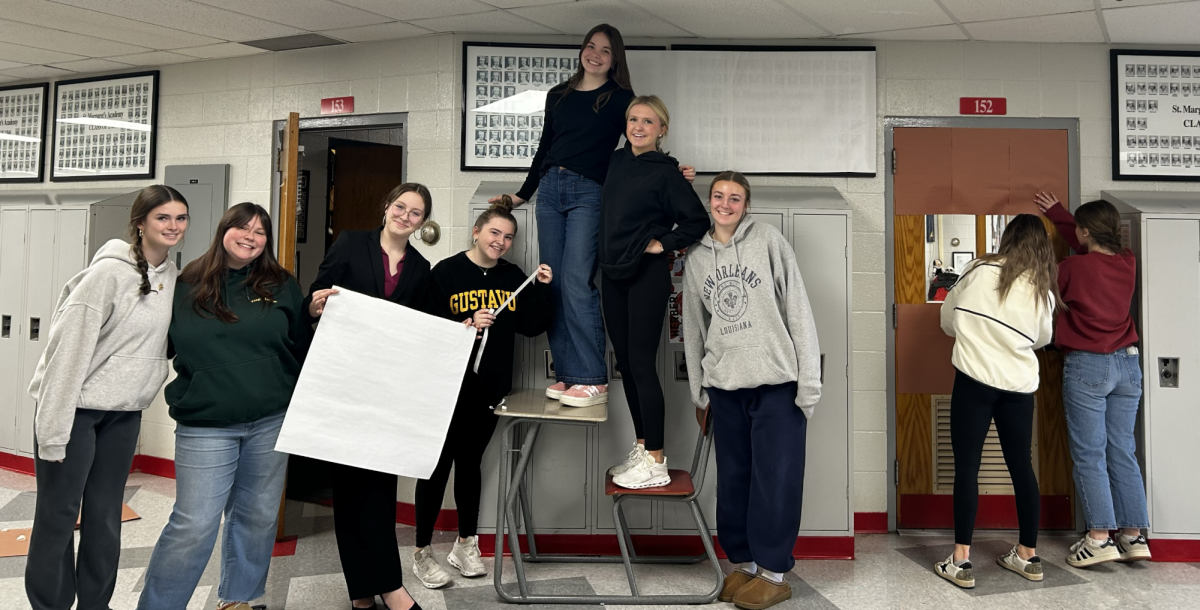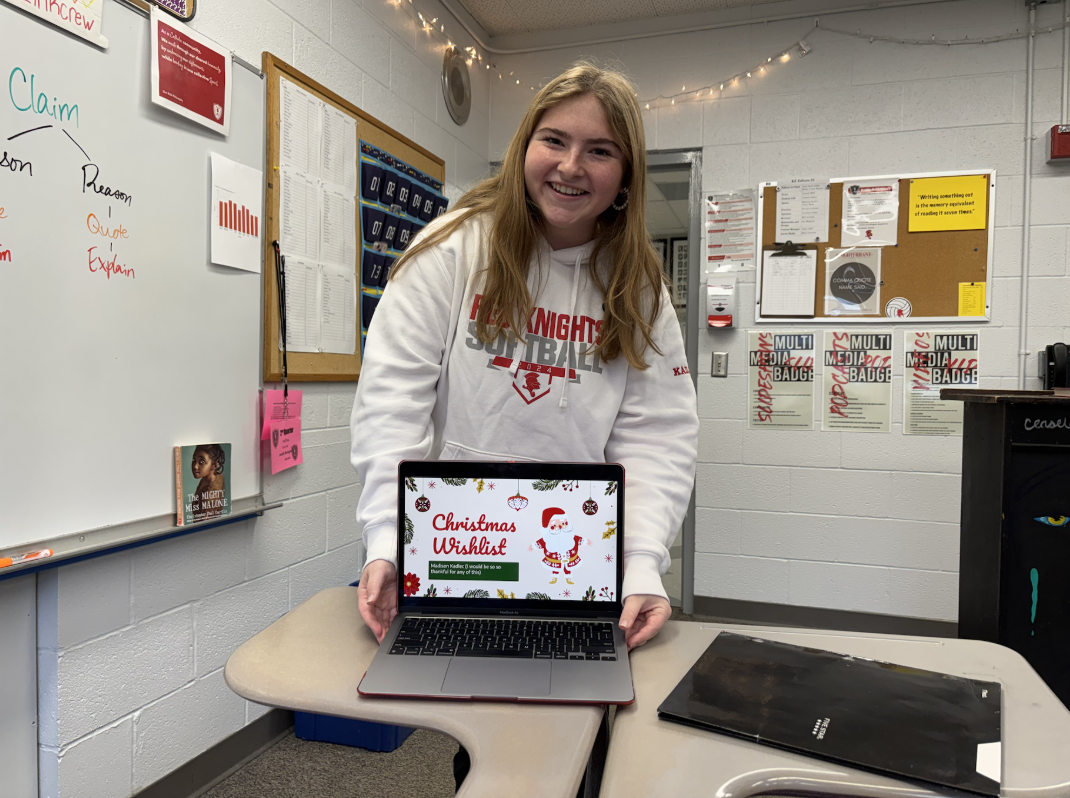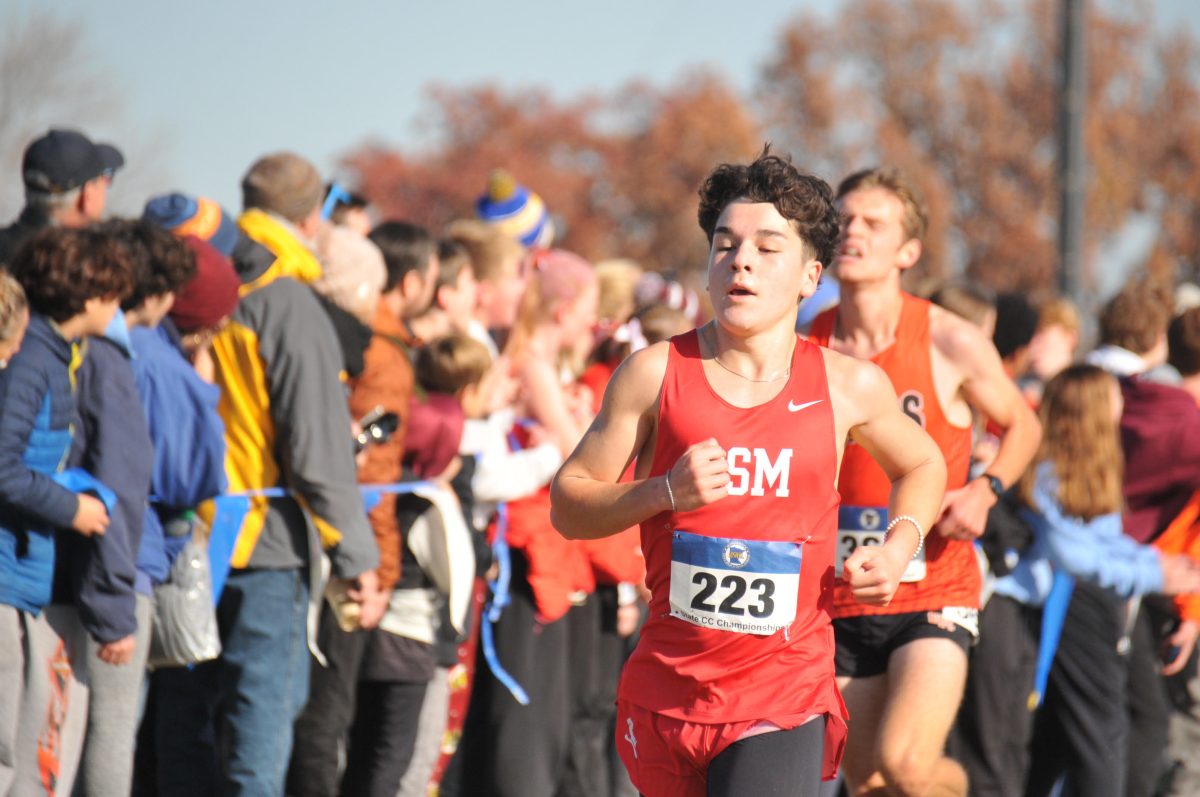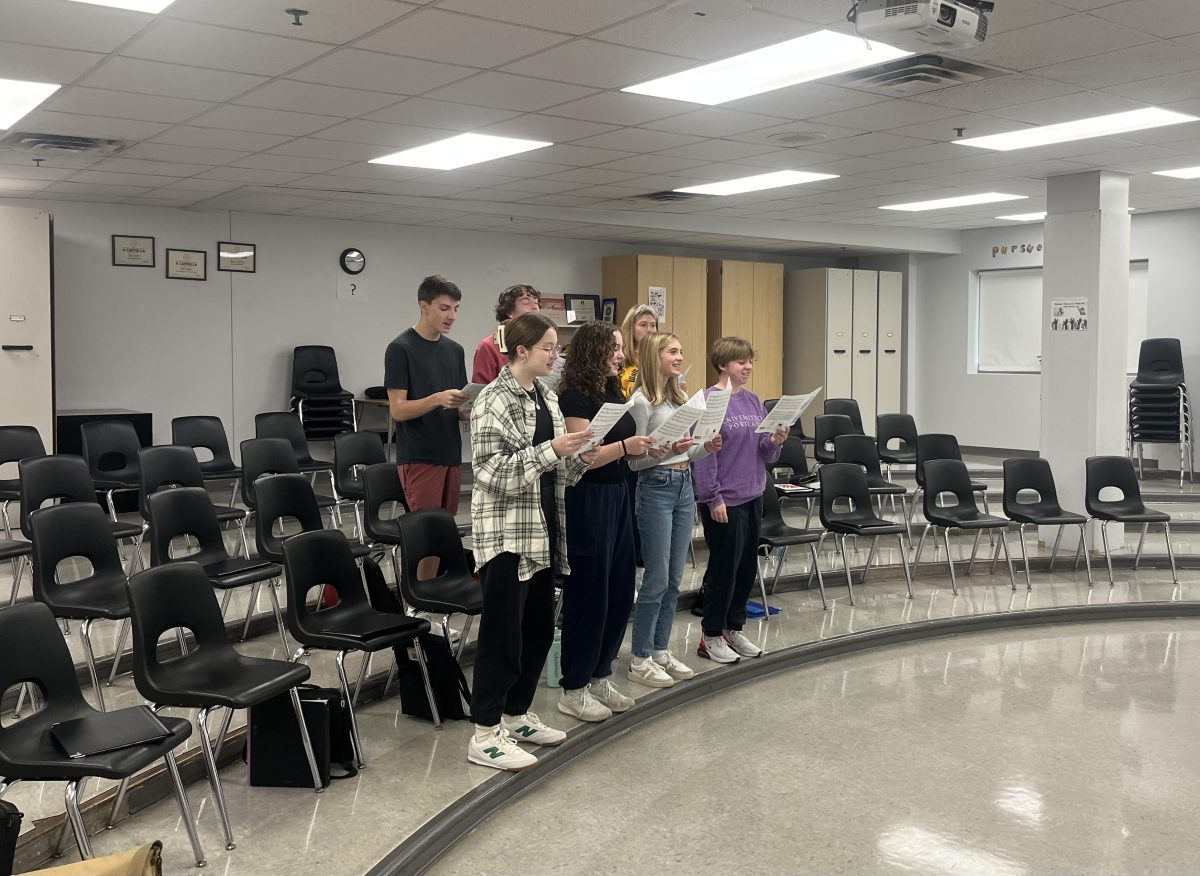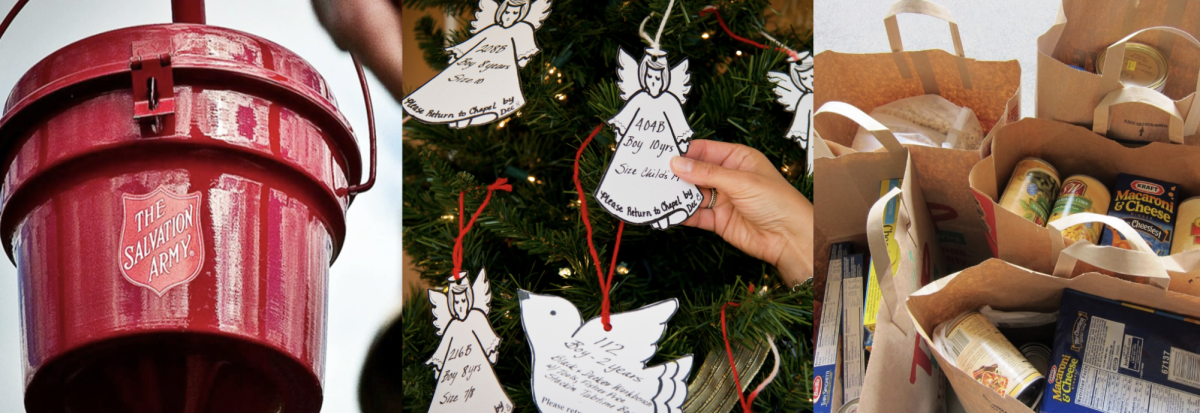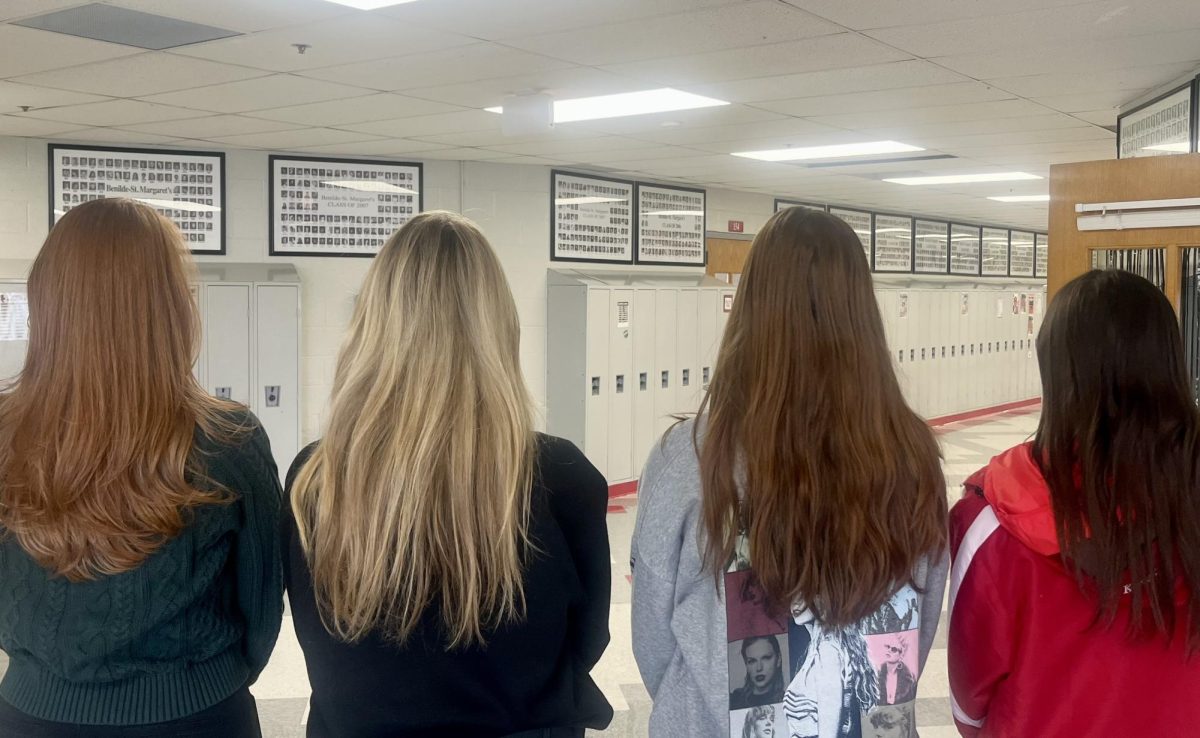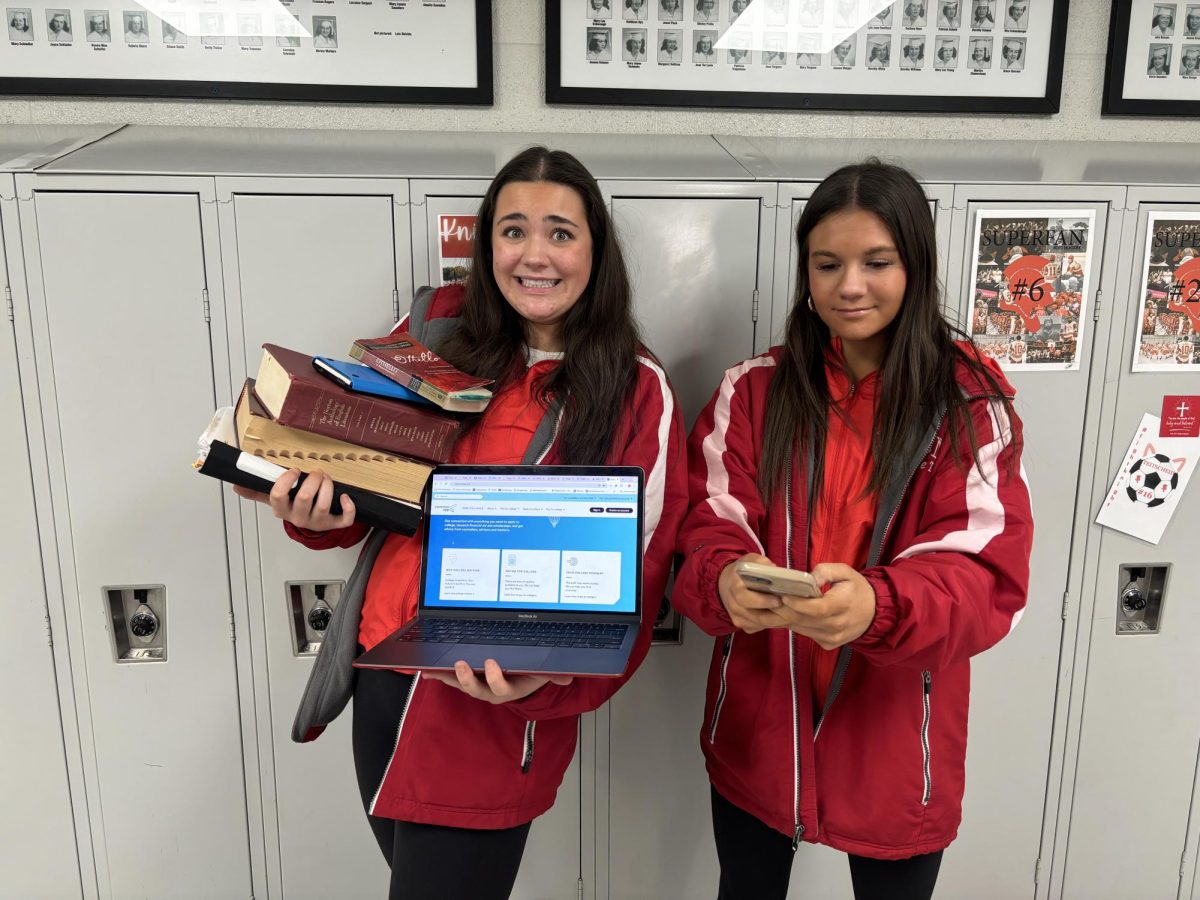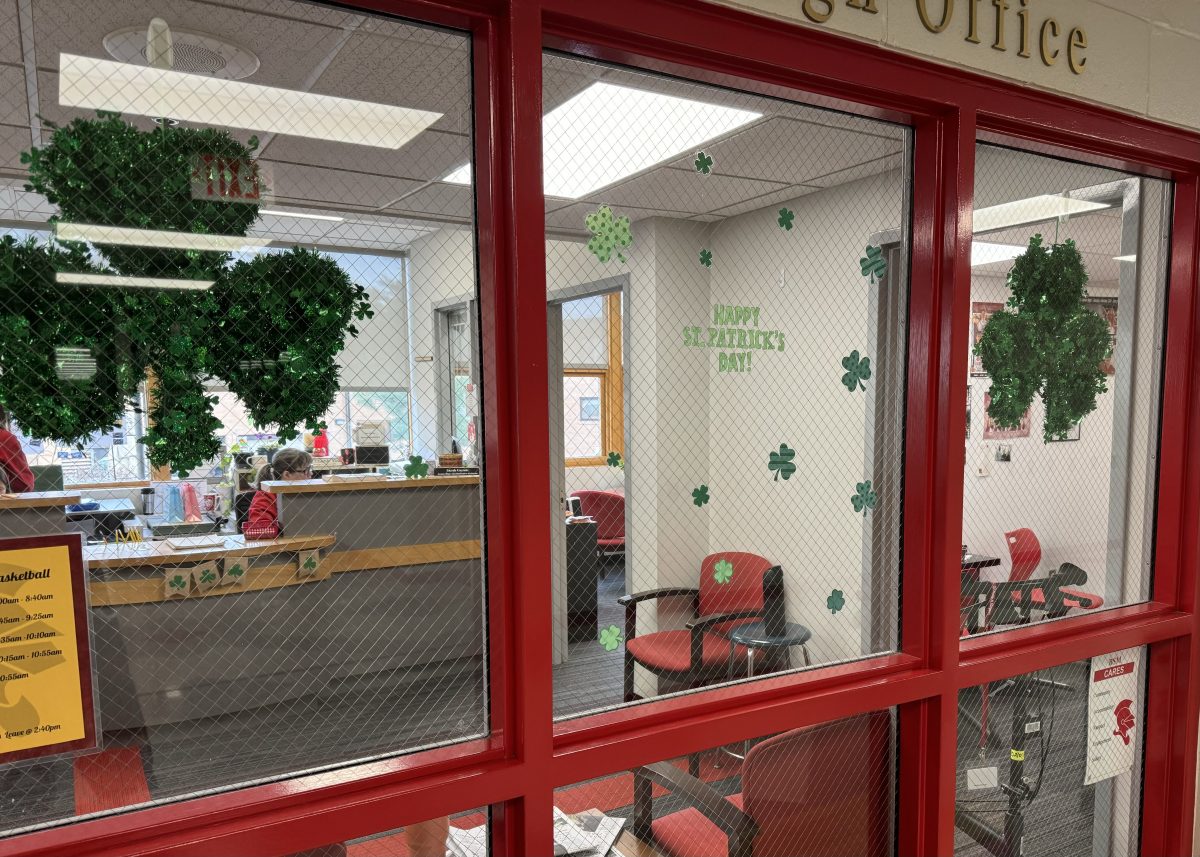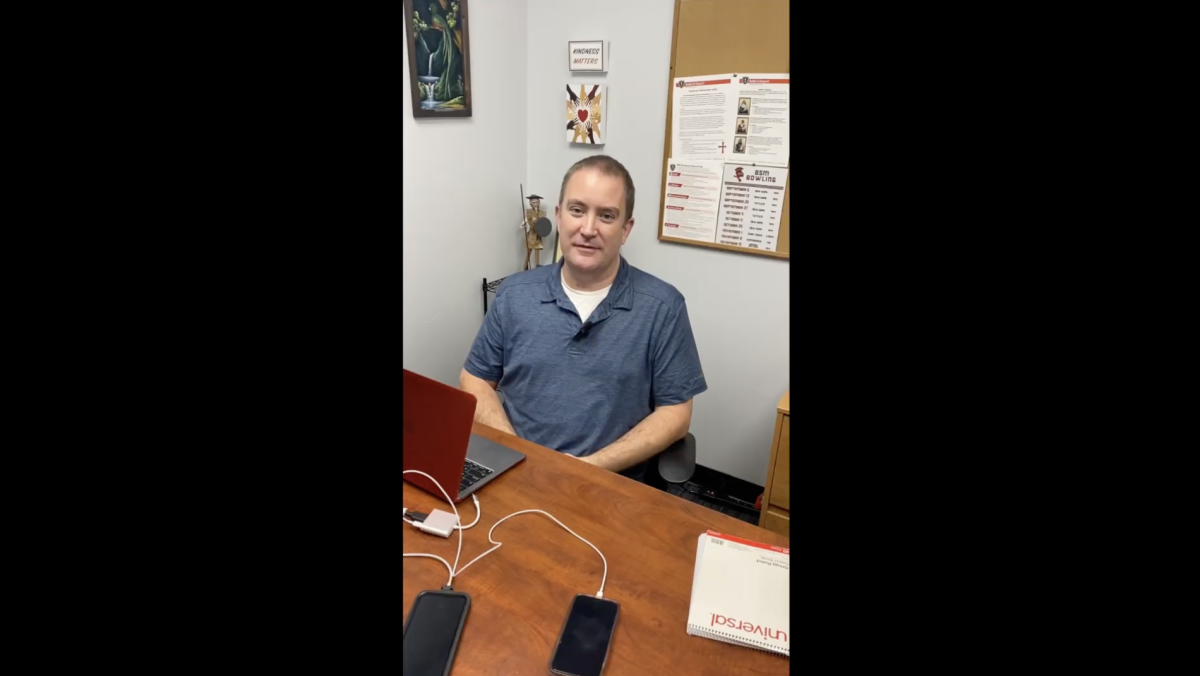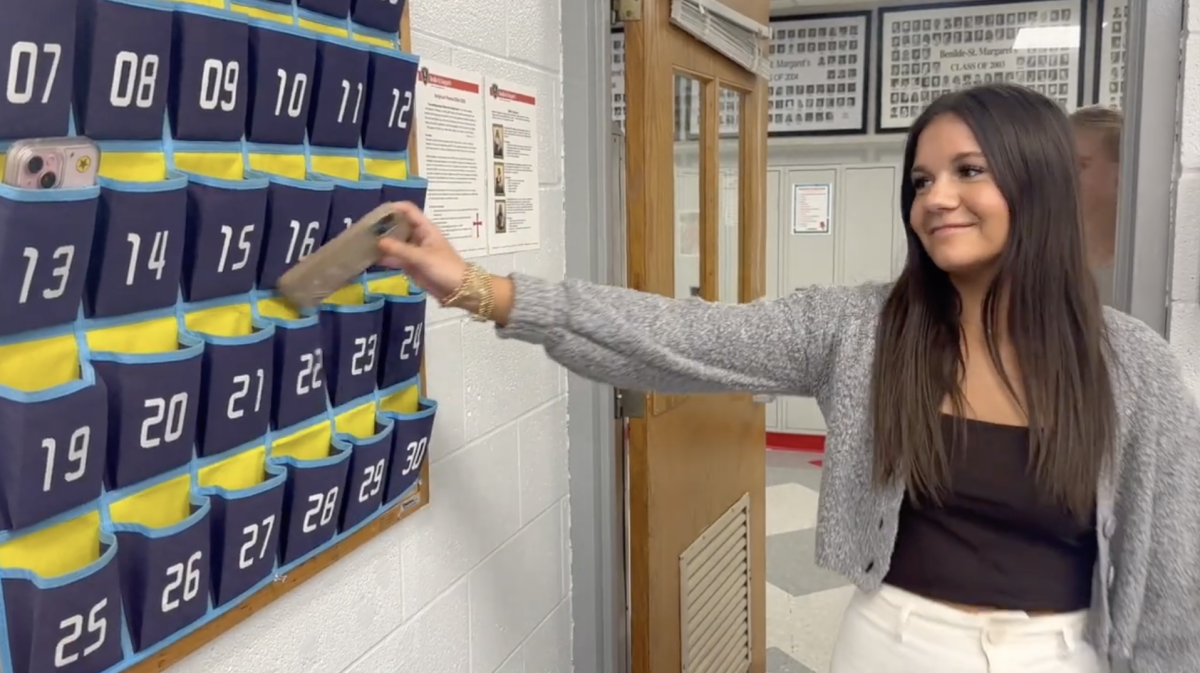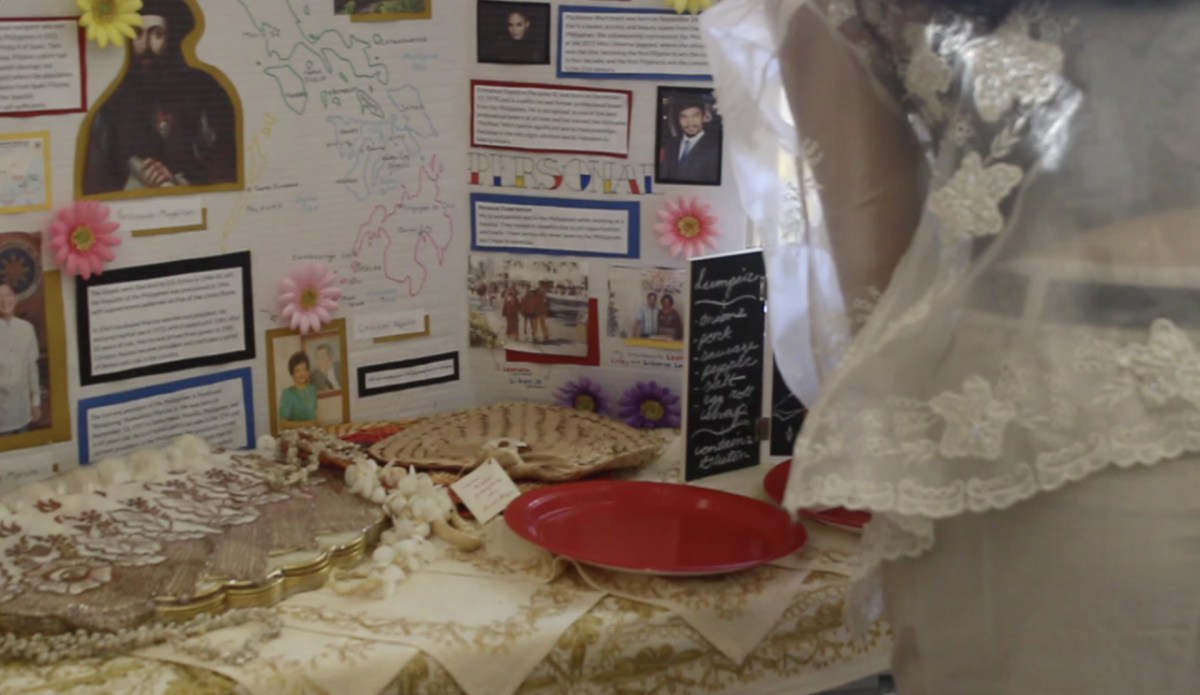Many BSM students were willing to give a little of their time to help save lives at the community’s Blood Drive with Memorial Blood Centers. For every one person that donated November 12 there were three people who benefited from the donation. After 11 years of coordinating with Benilde-St. Margaret’s, this was Memorial Blood Center’s 33rd successful drive.
This year, however, the drive was missing a memorable element. “The blood drop costume that normally promotes the drive was temporarily unavailable in that one of the suits was already rented and the other costume was missing a shoe,” said Maggie Schneider, Memorial Blood Center’s coordinator with BSM.
Upon their arrival students at the blood drive underwent a series of questions and blood tests prior to their donations in several isolated cubicles decorated with stories of people’s lives who were saved by blood donations. Kathy Thiessen, a four year volunteer for MBC, described the questions as “everything you wouldn’t want your mother to know.”
After making a blood donation, participants were treated to refreshments and food in order to avoid side affects of dizziness that often leads to fainting. Junior Maura Kelly was the only student with a confirmed side effect. “I just remembering them sticking me with the needle and the next thing I knew I heard five people surrounding me yelling my name, telling me to wake up,” said junior Maura Kelly.
There were, however students such as junior Ryan Monk who breezed through the process. He described his experience as rather pain free, and he even contributed a double unit (which earned him a t-shirt): “I’m kind of used to the whole concept because I’ve had surgery a couple of times.”
Many students were also turned away on November 12 if they had traveled out of the country in the last twelve months. However, the most common reason for not being able to donate blood is anemia, which occurs from low hemoglobin, or “iron poor” blood. Iron is a mineral that an essential constituent of blood and muscle, crucial for the transport of oxygen.
The need for blood is never-ending, as is the search for willing, eligible donors. By volunteering to donate blood, you’re giving the gift of life, which is a selfless act that could help save a life. However, “out of the 75 percent of the population that is eligible to give blood, only five percent actually donate blood,” said head phlebotomist, Jill Quam. She said that hospitals are often left in situations where there simply is not enough blood to save people’s lives, whether the circumstance be a surgery of some kind or cancer treatment.


